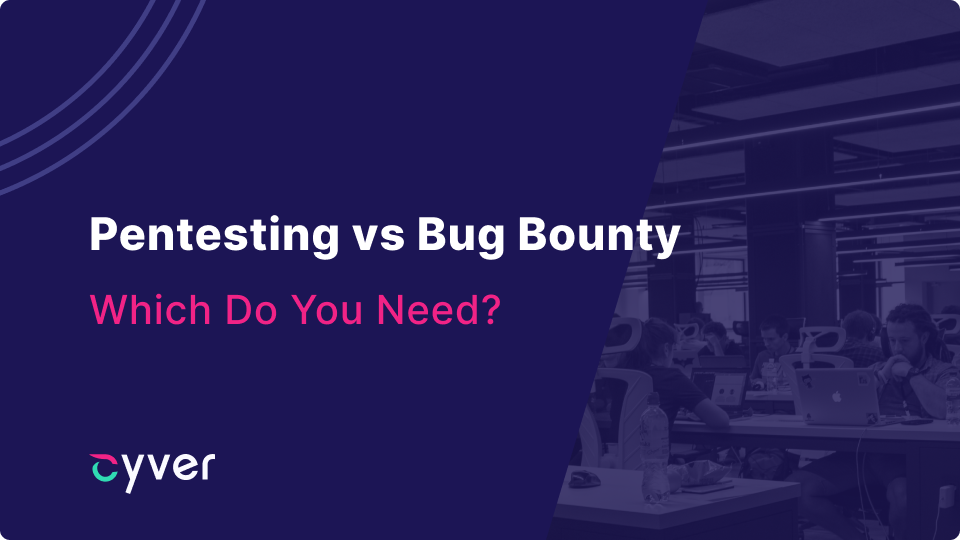Pentesting and bug bounty programs, like the popular HackerOne program, are both valid resources for testing and finding vulnerabilities in software, websites, and web applications. But, which should you use at which stage of development? And, which offers the most in terms of security, vulnerability findings, and long-term goals? This post compares pentesting with bug bounty programs to help you decide which you need.
In most cases, both pentesting and bug bounty programs are valid and important resources. One offers a stable and predictable basis with which to test the security of your environment. The other exposes your environment to much broader and less structured testing. Deciding which you should use relies on a strong knowledge of what each is and what each offers.
What is a Pentest?
Pentesting is normally conducted by pentesters or “ethical hackers” using structure, framework, and a checklist of items. In most cases, the pentest is fully customized to your website, to the IP addresses listed in the scope, and to the testing framework requested.
The pentester then systematically reviews vulnerabilities inside the scope, with a mix of manual testing, custom scripts, and automated assessment. These allow a hacker to get a full picture of your environment security, normally within 2-5 days of active testing. Following assessment, the hacker sends you or your developers’ findings. In the case of Cyver, those findings are delivered in real-time, as tickets, so developers and IT Security can immediately work on resolving the issue. You also need the complexity of a structured pentest to pass audits or to meet regulatory compliance.
| Pros | Cons |
| One flat fee for all vulnerabilities found | High upfront costs |
| Code review and testing for non-live environments | Pentest reports only describe the security of the web application on the day of the report |
| Manual verification of vulnerabilities | Testing is restricted to 3-16 days on average |
| Strict contracts to determine what can be tested and how | Most pentest teams are small (less broad insight) |
| Complexity of testing | Low level pentests might miss less common vulnerabilities |
| Testing frameworks to fully meet the needs of regulatory compliance |
What is a Bug Bounty Program?
A bug bounty program is an open or semi-open program in which a group of ethical hackers (these can be the exact same people running the pentest) test IP addresses or environments included in the scope at their leisure. A Bug Bounty program might be bound by time, attack type restrictions, or other qualifications, but normally uses a crowdsource approach to encourage multiple people to look at and test the site. They might also be “invite-only”, in which a closed group of hackers has access to the program. In every case, you pay for results, and typically on a case-by-case basis.
Because bug bounty programs can be ongoing, they offer considerable value to even large-scale companies. Bug bounties mean that a hacker has motivation to inform the company of vulnerabilities, rather than ignoring them or, worse, exploiting them. This means that bounties can be quite high, with some ranging into the tens of thousands of dollars. While the average company will likely never set a bounty so high, rates typically have to warrant testers reviewing your site in the first place.
| Pros | Cons |
| Long-term input from more hackers | Intermittent testing with no structure |
| You only pay for valid vulnerabilities | You fully set the scope and you might not know where to look for vulnerabilities |
| Wide range of testers (ethical hackers) with different experiences and education. | Findings reports vary in quality and style |
| Long-term (continuous) testing of your security. | Low-reward bug bounty programs do not attract a lot of interest |
| Possibility of testing in production and/or test environment. | Testing is for live environments only |
| Bug bounty programs can find rarity outputs that pentest can’t detect. | Less complexity and structure, so items may be missed if hackers don’t think of them |
When to Choose Pentesting vs Bug Bounty?
Both pentesting and bug bounty programs offer value. However, most have a time and a place.
Pentests:
- Establish basic security. Pentests offer systematic and complex review of your assets, within a defined period, so that you can resolve basic assets and quickly improve security.
- Test environments before they go live to prevent attack-of-opportunity breaches. Pentesting can include code review and software review before you go live, giving you a better baseline of security
- Meet compliance requirements and pass audits
Bug Bounty:
- Ensure ongoing security, such as catching vulnerabilities to new threats as they arise
- Use crowdsourcing to find harder-to-spot vulnerabilities which might be outside the scope of traditional pentesting
- Leverage a wider range of human insight to “think outside the box” to find vulnerabilities
Essentially, pentests work best to meet short-term security needs, such as resolving the vast majority of vulnerabilities present, meeting compliance needs, or securing an environment before it goes live. Bug bounties are much more suitable for ongoing security to catch new or unusual vulnerabilities. The answer to the pentesting vs bug bounty question isn’t “one is better”, it’s that each is suited for different purposes.
